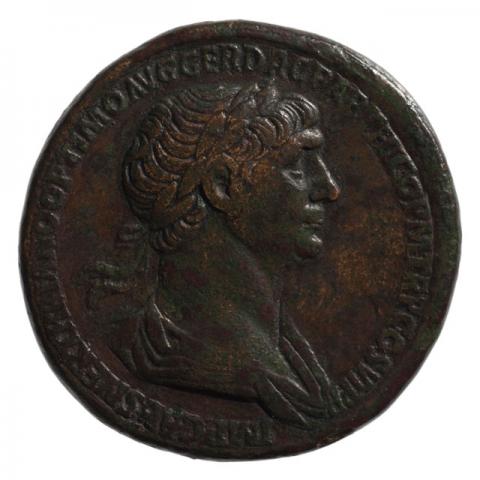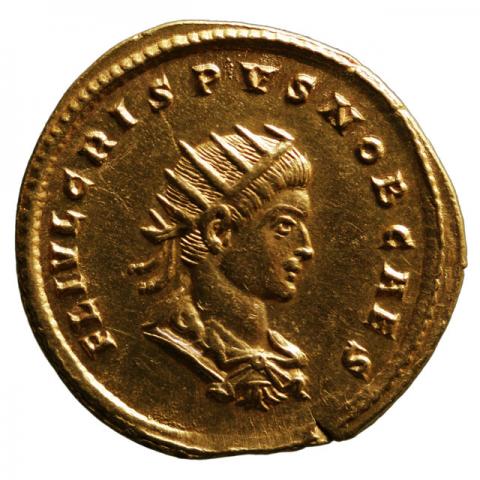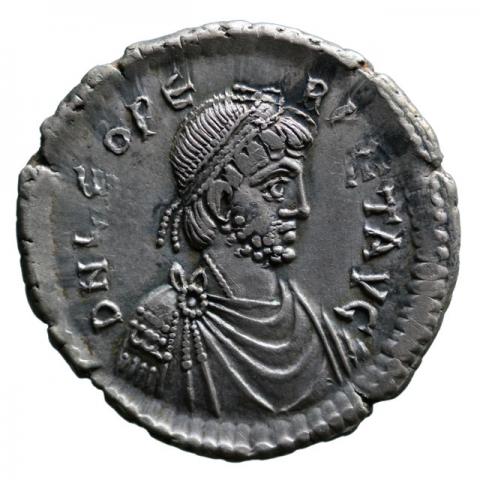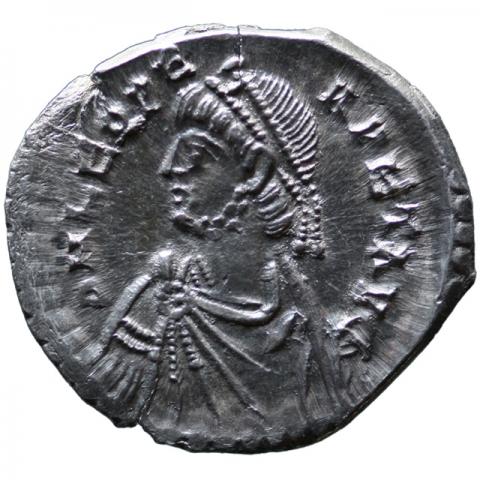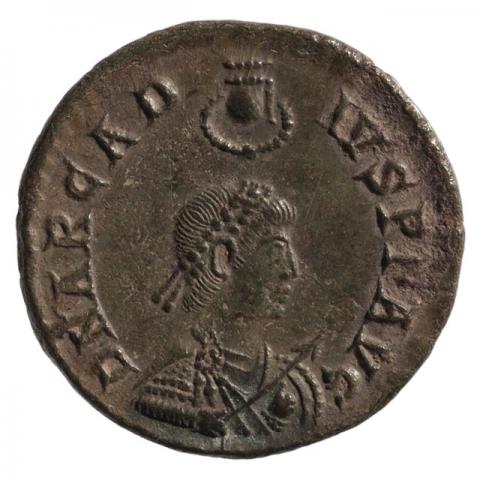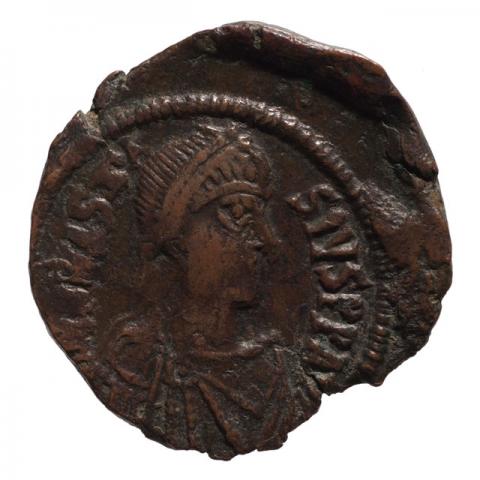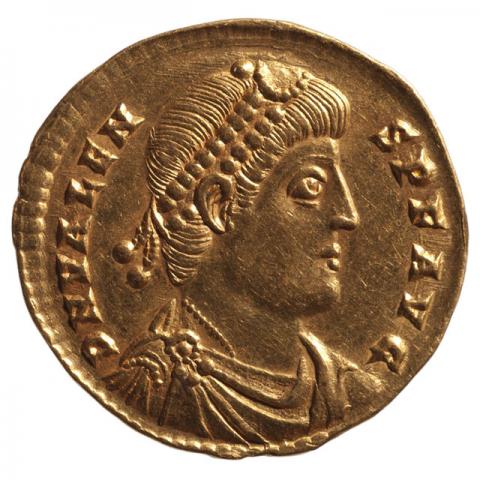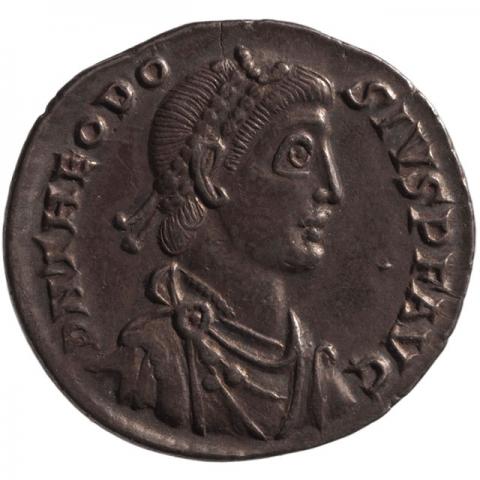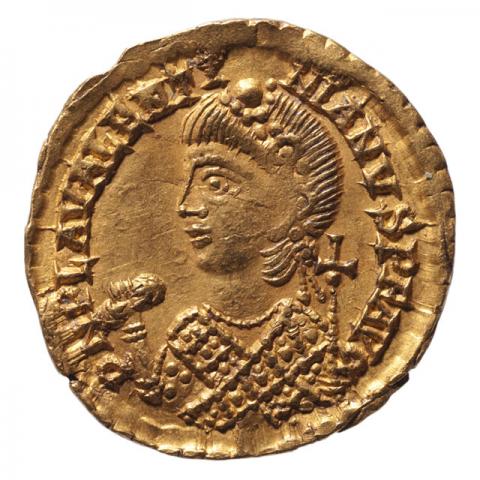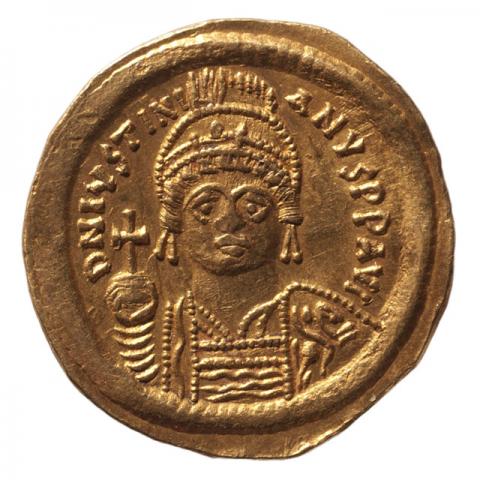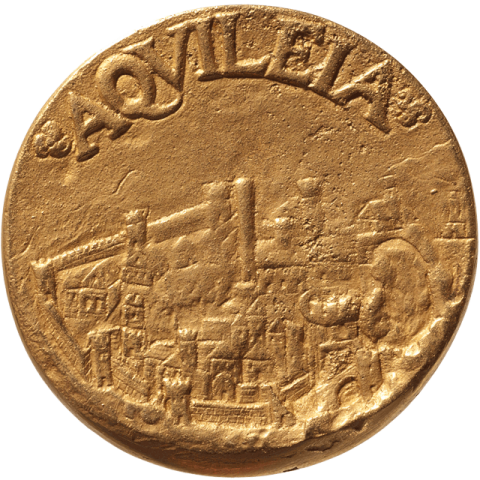A. Unknown Italian medalist Fictive portrait medal of Attila as “Scourge of God”
Undated (2nd half of the 16th century)
Bronze (cast)
KHM, Inv.-Nr. MK 321bβ
B. Unknown Italian medalist
Fictive portrait medals of Attila commemorating the sack of Aquileia in 452 CE.
Undated (2nd half of the 16th century)
Gold (cast), silver (cast)
KHM, Inv.-Nr. MK 13302bβ, 13303bβ

C. The divide oft he Roman Empire in a western and an eastern part took place after the death of emperor Theodosius in the year of 395 AD. The encroachment of the Huns to Europe changed the complete political order. Centre oft he Hunnish sphere of influence were the Pannonian lowlands at the rivers Danube and Tisza. Only after costly battle at the Catalaunian Fields (451) and the death of Attila (453) the collapse oft he Hunnish kingdom began. Already several decades later (475/480) the Western Roman Empire collapsed. The Eastern Roman (Byzantine) Empire however outlasted additional 1000 years until the middle oft he 15th century.


